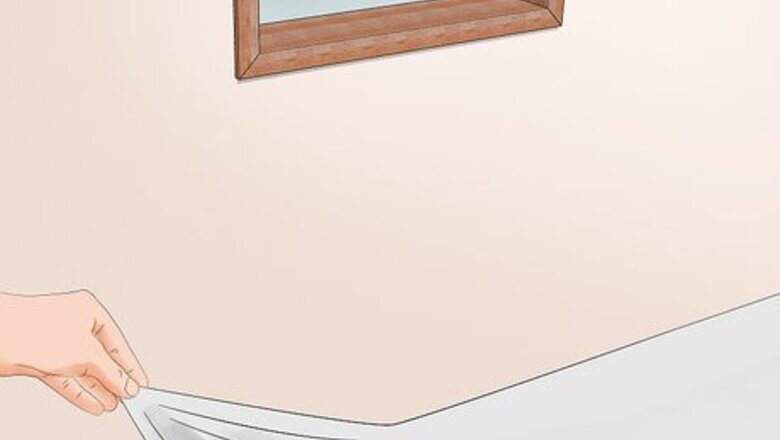
views
Repairing the Wood Before Painting
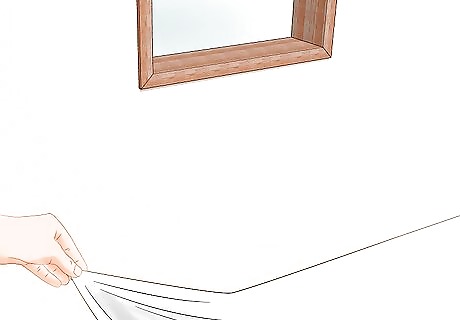
Protect your work area with plastic sheeting or drop cloths. Cover any items near your work area which may be splashed with paint, such as: furniture, walls, floors, shrubs, windows, etc. Tie back any items which may rub against the painted surface while you’re working, such as: blinds, curtains, shrubs, tree branches, flowers, etc. If you’re working inside, also make sure the room is well-ventilated. Use painter’s tape to attach the plastic or cloths to another surface, so you don’t damage that surface. If you’re working outside, cover and protect one section at a time, then move the plastic or cloths when you move to another section.

Inspect the entire wood surface. Check over the entire surface of the wood item you plan to paint and look for damage that may need to be repaired. Look for things like loose or broken nails or screws, broken boards or pieces of siding, or holes or gouges. etc. This step is only really necessary for wood items that are not brand new.

Repair or replace broken or damaged items. Replace hardware as necessary, such as screws and nails. Replace broken or damaged boards with new ones. If nails or screws do not need to be replaced, ensure they are all either flush with the surface of the wood, or below the surface of the wood. Try to replace the nails and screws with the same type, size, shape, and colour so the wood surface has a consistent look to it. Make sure to replace old boards or siding with the exact same type of wood.
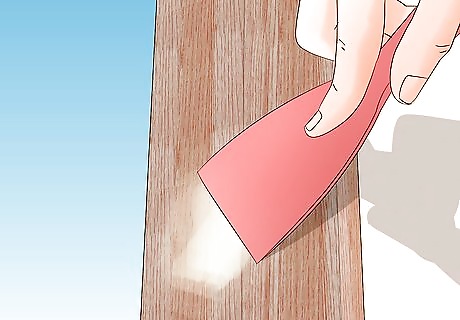
Use wood putty or filler in holes, dents, scratches, and gouges. You can also use wood putty/filler to fill in the holes created by nails or screws. If possible, use fast-drying wood filler so you don’t have to wait very long before sanding. Check the manufacturer’s instructions for the exact drying time. Use a metal or plastic putty knife to apply the wood putty/filler.

Add or replace caulking as needed. For exterior projects, such as wood siding, you may want to use this opportunity to remove and replace the caulking around windows, doors, vents, etc. For interior projects, you may want to use caulking to fill in the gaps between sections or areas so they blend seamlessly once painted. Check to make sure the caulking you use can be painted. Check the manufacturer’s instructions for the amount of time it will take for the caulking to dry. Use your finger or a caulk sealing tool to smooth out the caulk after you’ve squeezed it into the cracks or seams.
Sanding and Cleaning the Wood Surface
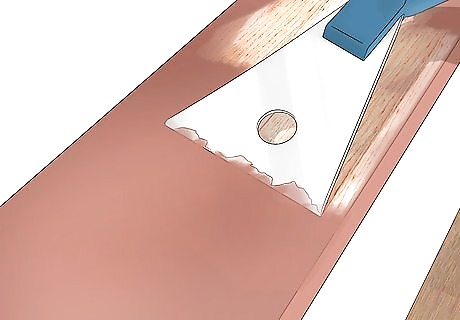
Scrape off old paint or stain. If the wood item has been previously painted or stained, you’ll want to remove any loose or flaky sections. For larger surfaces like wood siding or a deck, you can scrape the old paint or stain off using a wire brush or even a pressure washer. For smaller surfaces like furniture, you can use a scrub brush or a metal scrapper. For decks, you may also want to use paint or stain stripper or remover. When using a chemical stripper or remover, read the manufacturer’s instructions for the proper way to use it. Ensure you wear the proper protective gear for the work you’re doing. Make sure you scrape the wood in the direction of the grain. For deck boards and wood siding, if you needed to replace any boards, you’ll want to only pressure wash the old boards so they are the same colour as the new boards.
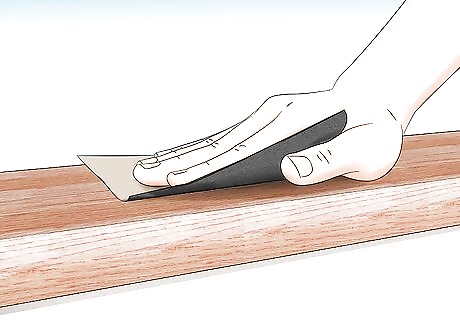
Sand the wood surface. Depending on the size of the surface that needs to be sanded, you can use hand-held sandpaper, an electric sander, or even a precision sanding tool (like a Dremel). Start with rougher sandpaper and switch to finer sandpaper as the surface comes closer to being smooth. The purpose of sanding is to even out the surface of the wood and rough up the surface so the primer and paint will be absorbed. If you’ve used wood putty or filler, make sure to sand these areas so they’re flush with the rest of the surface. Always sand in the same direction of the wood grain.
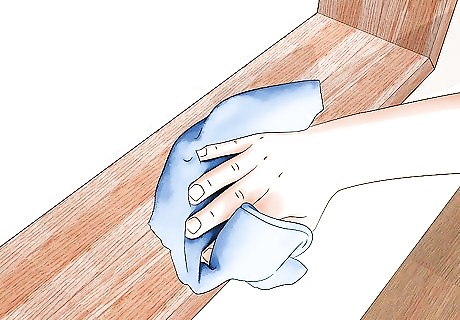
Wipe the wood clean of debris and dust. Wash the entire wood surface once you’re finished scraping and/or sanding. You want to remove any old paint flakes or dust that’s been left on the surface. For smaller wood items like furniture, wash the wood surface with a gentle scrub brush and mild detergent. For larger items like wood siding, you can use your outdoor hose or a pressure washer at a very light pressure. Pay specific attention to nooks and crannies that are hard to get to. These areas have likely accumulated more dirt and grime over the years. For decks, you’ll want to clean the surface with wood cleaner. You can buy wood cleaner at your local hardware store. Follow the manufacturer’s instructions on how to use the cleaner properly.
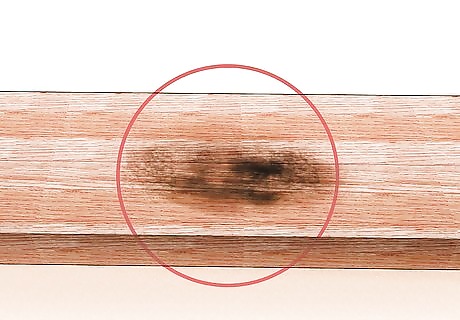
Inspect the wood for mold and mildew, and mill glaze. Once wet, mold and mildew on wood will appear black. If you see any black areas on the wood, you’ll want to purchase a specialized product that can be used to ensure the mold and mildew doesn’t spread and can be painted over. You can find specialized products for mold and mildew on wood from your local hardware store. Explain the wood item you’re painting to someone at the store to ensure you purchase the right product. Follow the manufacturer’s instructions for using the product.
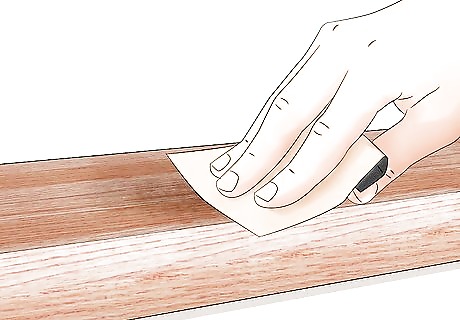
Check the wood for mill glaze. Mill glaze is simply areas of the wood where water beads and doesn’t soak in. In order for the primer and paint to be absorbed into the wood properly, mill glaze needs to be removed. Re-sand the areas you’ve found with mill glaze until water no longer beads on top. Newer wood may have mill glaze that is a result of the cutting process. However, older wood may have mill glaze that is a result of not enough paint or stain before removed.
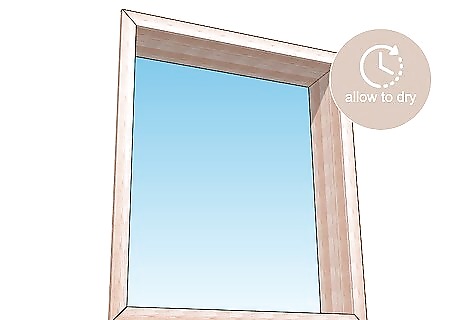
Allow the wood surface to dry. Before proceeding any further with your painting project, make sure all the wood surfaces have completely dried. If you’re working outside, you may need to watch the weather forecast and only move to the next step when there are several dry days in a row. Not only do you need the surface to be dry from the cleaning, but it needs to remain dry once the primer, paint, and/or stain has been applied. For wood items drying inside, it might help to speed up the process by making sure the room is well-ventilated and/or there’s a fan blowing in the room.
Applying Primer to the Wood
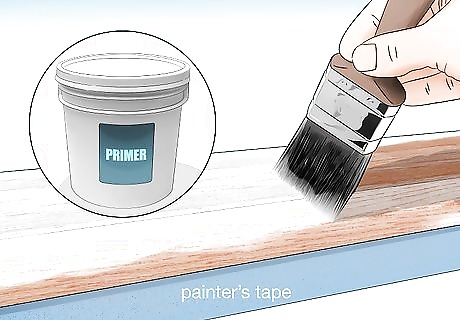
Apply the first layer of primer. Make sure you use primer specifically designed for your wood project (interior vs. exterior, unfinished wood vs. previously painted wood, etc.). Apply the primer in a thick, even layer. It should be thick enough to cover the wood grain underneath. Allow the first layer of primer to dry completely before moving on. You can use brushes or rollers to apply the primer. As long as the surface is flat, a roller may be your quickest option. Adjust the size of the roller based on the size of your project. Read the manufacturer’s instructions to determine how long your primer will take to dry.

Sand the wood surface a second time. If the first layer of primer went on uneven or feels bumpy, you may want to lightly sand the surface again. This will smooth and even out the surface again, before the second layer. Use a very fine sandpaper for this step, and only use light pressure. This step is more important on items you’re going to look at up close, like furniture. Once sanded, wipe off the dust with a damp cloth.
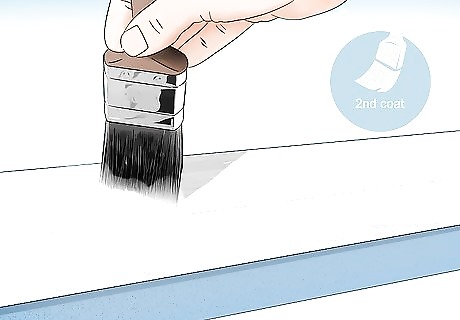
Apply a second layer of primer. If your first layer of primer was thick enough to cover the wood grain and you didn’t need to sand it a second time, you can skip this step and move onto painting. However, if you can still see the wood grain (or previous paint colour) or you had to sand the surface after the first layer, you’ll need to add a second thick and even later of primer. If the wood surface was previous painted in a dark colour and you want to paint over it in a light colour, you may need more than 2 layers of primer.



















Comments
0 comment